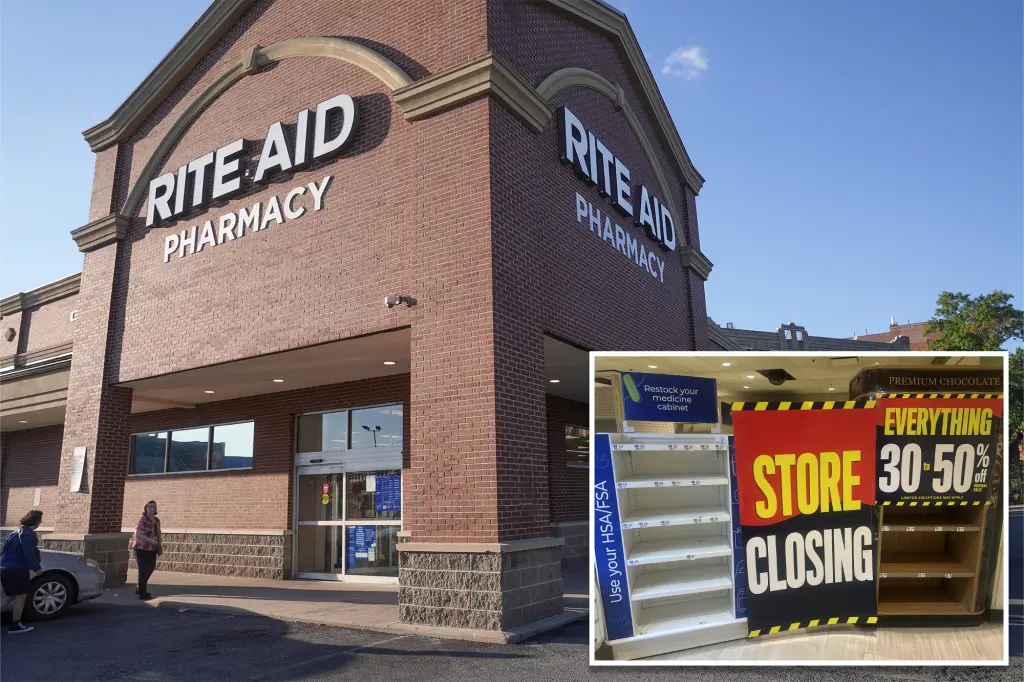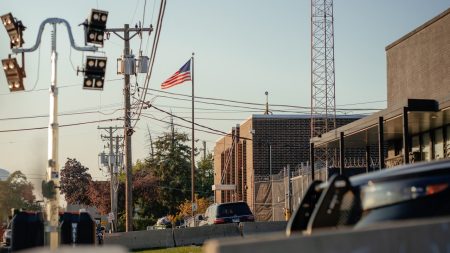The Demise of Rite Aid: A Once-Prominent Pharmacy Chain Closes Its Doors
After more than six decades of serving communities across the United States, pharmacy giant Rite Aid has officially shuttered all of its remaining locations following a second bankruptcy filing in less than two years. The company, which once stood as America’s largest drugstore chain with over 2,000 stores in 1987, posted a simple farewell message on its website: “All Rite Aid stores have now closed. We thank our loyal customers for their many years of support.” This brief announcement marks the end of an era for a retailer that had become a familiar fixture in neighborhoods throughout the country. The website now primarily serves as a resource for former customers seeking their prescription records and information about where their medications have been transferred—a final service from a company that can no longer provide care directly.
The collapse of Rite Aid represents a dramatic fall for a business that once had promising prospects and significant market power. Throughout its history, the company had opportunities to merge with industry competitors, including potential deals with Walgreens in 2017 and Albertsons in 2018. However, Rite Aid rejected both of these potential lifelines, decisions that in retrospect appear to have accelerated its decline. As the retail pharmacy landscape transformed with increasing competition from not just traditional rivals like CVS and Walgreens, but also from retail giants like Walmart and the growing online presence of Amazon Pharmacy, Rite Aid struggled to maintain relevance and profitability. These market pressures, combined with changing consumer behaviors and the challenges of the digital age, created a perfect storm that the once-mighty chain could not weather.
Rite Aid’s first major stumble came in 2023 when it filed for bankruptcy protection while facing a crushing combination of financial and legal challenges. The company was drowning under the weight of mounting debt and experiencing sluggish sales due to fierce competition in the pharmacy sector. Adding to these business difficulties were hundreds of lawsuits connected to the company’s alleged role in the opioid crisis—legal troubles that further strained its already precarious financial position. In response to these challenges, Rite Aid initiated an aggressive “store optimization plan,” immediately closing 154 of its 2,284 locations in an attempt to stabilize its operations and focus resources on more profitable stores. This drastic measure was intended to be the first step in a broader restructuring that would allow the company to emerge stronger and more financially viable.
Despite these efforts, the company’s troubles continued to mount. Throughout the restructuring process that followed its initial bankruptcy filing, Rite Aid closed hundreds of additional stores, steadily shrinking its footprint across the American retail landscape. By the time of its second bankruptcy filing in May 2025, the chain had dwindled to approximately 1,245 locations—nearly half of its previous size. The first restructuring had succeeded in reducing some of the company’s debt burden, but it wasn’t enough. When Rite Aid emerged from its initial bankruptcy as a private company owned by its lenders in 2024, it still carried approximately $2.5 billion in liabilities. More critically, the restructuring failed to address the fundamental business challenges that had led to the company’s decline in the first place, leaving it vulnerable to the same market pressures that had initially driven it into financial trouble.
The persistent challenges that ultimately proved fatal to Rite Aid extended beyond just debt management. The company struggled to navigate inflationary pressures that increased operational costs across all aspects of its business, from inventory to staffing. At the same time, it faced increasingly sophisticated competition from pharmacy giants like Walgreens and CVS, both of which had successfully expanded their healthcare service offerings and digital capabilities. Additionally, non-traditional competitors like Walmart leveraged their massive scale and grocery operations to capture pharmacy customers, while Amazon’s entry into the prescription drug space brought new online convenience that appealed to younger consumers. These market dynamics created an environment where Rite Aid—already weakened by debt and legal troubles—simply couldn’t find a sustainable path forward. Its inability to innovate, adapt to changing consumer preferences, or differentiate itself in a crowded marketplace ultimately sealed its fate.
The closure of Rite Aid’s final stores represents more than just another retail bankruptcy in an era of changing shopping habits; it marks the end of a company that was once woven into the fabric of many American communities. For decades, Rite Aid pharmacies served as trusted neighborhood health resources where customers filled prescriptions, received immunizations, purchased over-the-counter medications, and found everyday essentials. Many longtime customers had developed relationships with their local pharmacists who knew their health histories and provided personalized care and advice. Now, these customers must transfer their prescriptions to other pharmacies and adjust to new healthcare providers. Meanwhile, thousands of former employees—from pharmacists and pharmacy technicians to store managers and cashiers—have lost their jobs, creating ripple effects in communities across the country. The Rite Aid story serves as a cautionary tale about the challenges of retail in the digital age and the consequences of failing to adapt to changing market conditions. As the last stores close their doors for good, they leave behind empty storefronts, displaced workers, and customers searching for new places to meet their healthcare needs.











